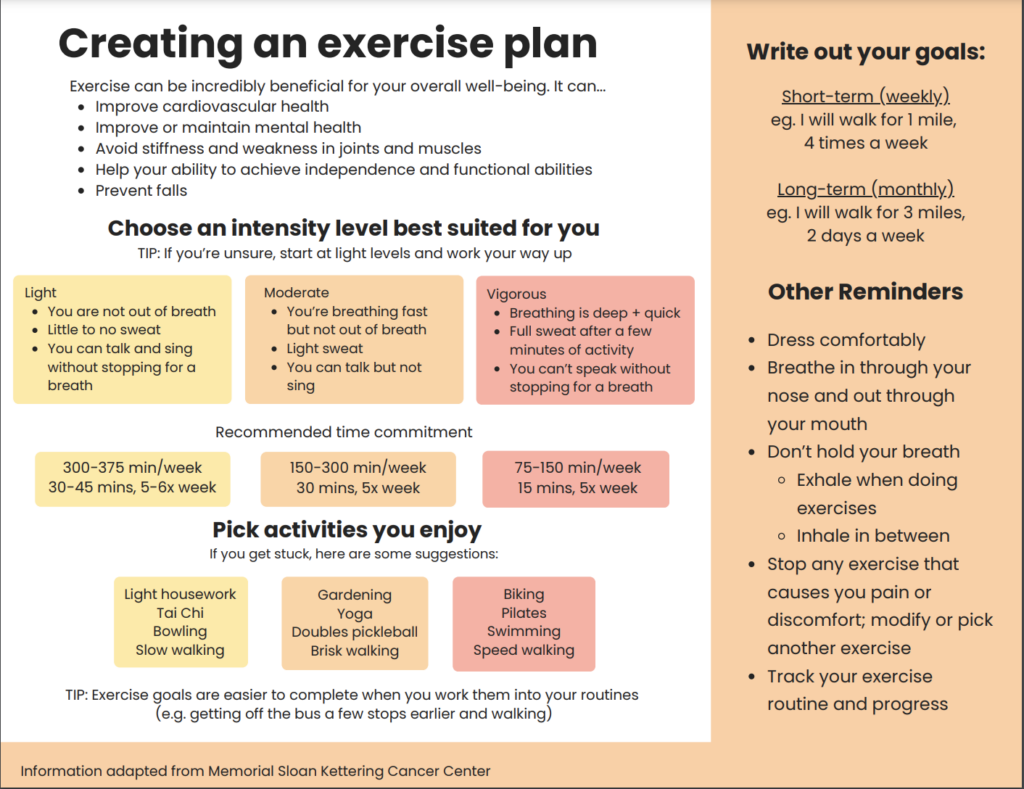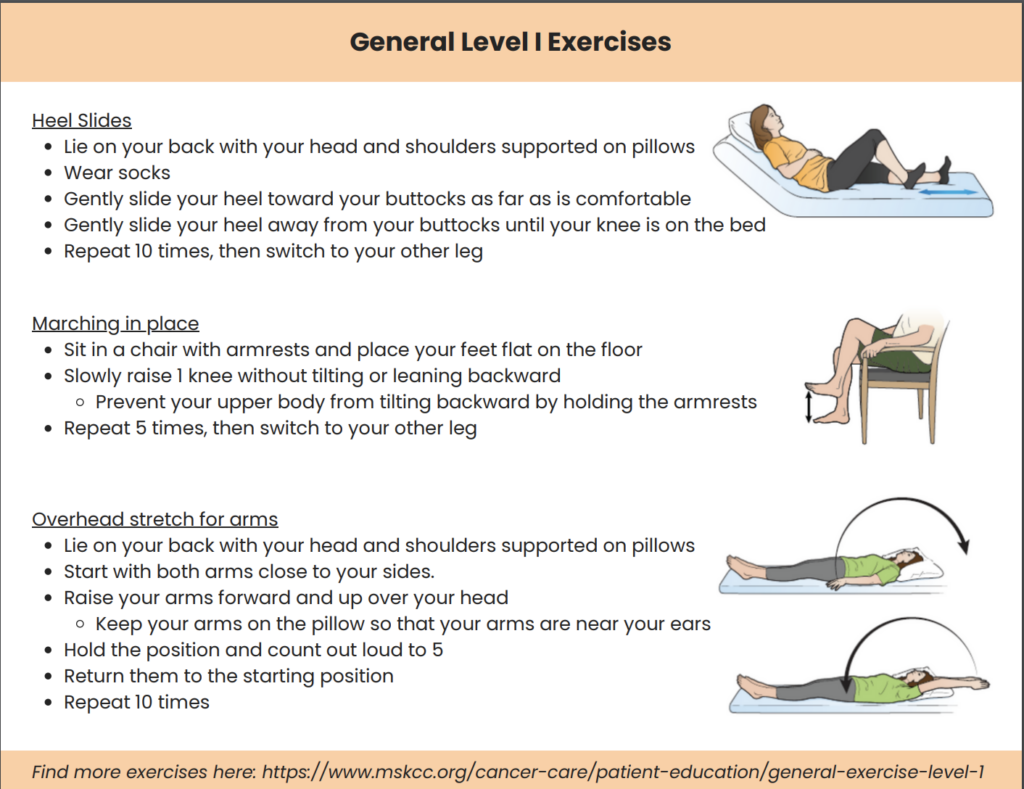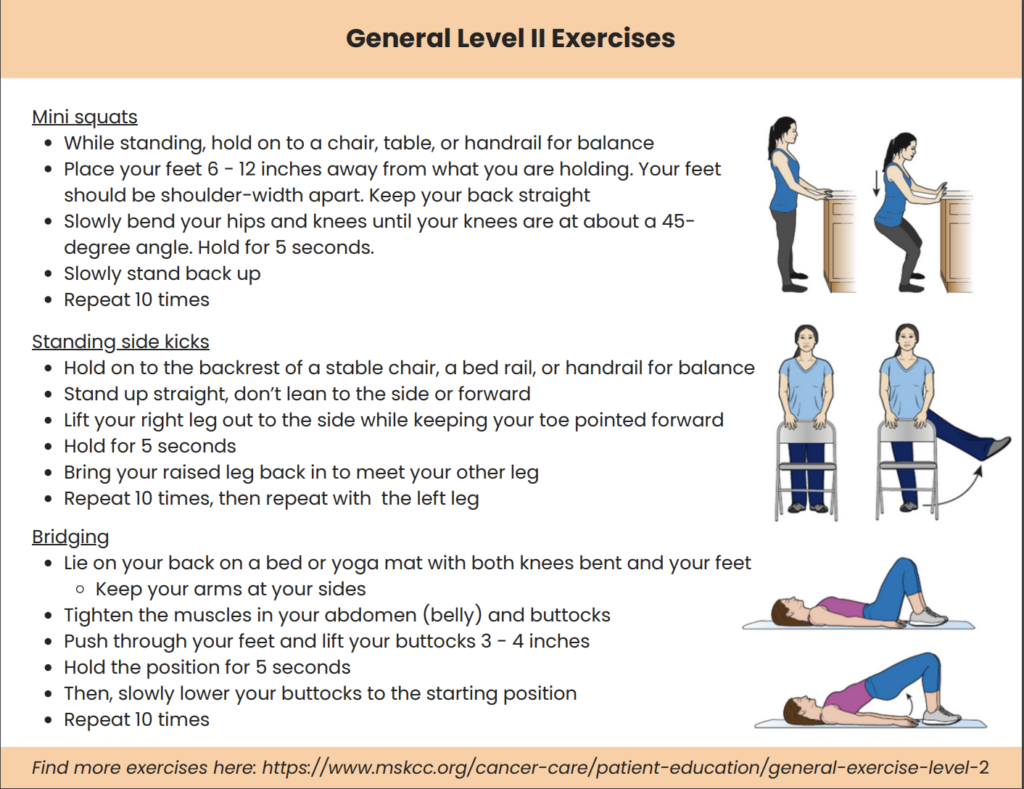November 18, 2024
The Importance of Staying Active After a Brain Tumor
Staying physically active after a brain tumor diagnosis can be beneficial for your overall health. Regular exercise helps strengthen your heart, improve/maintain your mood, and prevent stiffness and weakness in your joints and muscles. Practicing an active lifestyle can also support your independence and reduce the risk of falling. Remember, there’s no right or wrong way to participate in exercise—what matters most is finding a routine that works for you and your body. Below are some tips to help you stay active in a safe and effective way.
Selecting Your Exercise Intensity
Choose an activity level that feels comfortable (TIP: If you’re unsure where to start, begin with low-intensity activities and work your way up)
- Low intensity: This is a light movement where you don’t feel too tired or out of breath.
- Recommended time commitment: 30-45 minutes, 5-6x week.
- Low-intensity activities: Light housework, Tai Chi, Bowling, Slow walking
- Moderate intensity: At this level, you’ll start breathing faster and sweating a little, but it’s still comfortable.
- Recommended time commitment: 30 minutes, 5x week.
- Moderate intensity activities: Gardening, Yoga, Doubles Pickleball, Brisk Walking
- High intensity: This is when your body is working really hard. You’re breathing fast and deep, sweating a lot, and it’s hard to talk without stopping for a breath. This could include sprinting, jumping rope, or doing exercises like squats or push-ups quickly.
- Recommended time commitment: 15 minutes, 5x week.
- High-intensity activities: Biking, Pilates, Swimming, Speed walking
Setting Achievable Goals
Start with realistic goals that you can easily build into your daily routine:
- Short-term goal (weekly): For example, I will walk 1 mile, 4 times a week.
- Long-term goal (monthly): For example, I will ride a bike 1 mile, 8 times a month.
Helpful Tips for Exercising
- Wear comfortable clothes that allow you to move freely.
- Breathe in through your nose and out through your mouth during exercise.
- Stop any exercise that causes you pain or discomfort; modify or pick another exercise
- Keep track of your exercise routine and progress. Adjust your goals as needed.
Incorporating Activity Into Daily Life
You don’t have to commit to a gym routine to stay active. Activities such as gardening, walking around the block, or light house chores can help you stay moving throughout the day.
By making exercise a part of your routine, you can improve your physical and mental health. Remember to listen to your body, start slowly, and choose activities you enjoy. Celebrate each step of progress and keep a positive mindset as you work toward your fitness goals!


